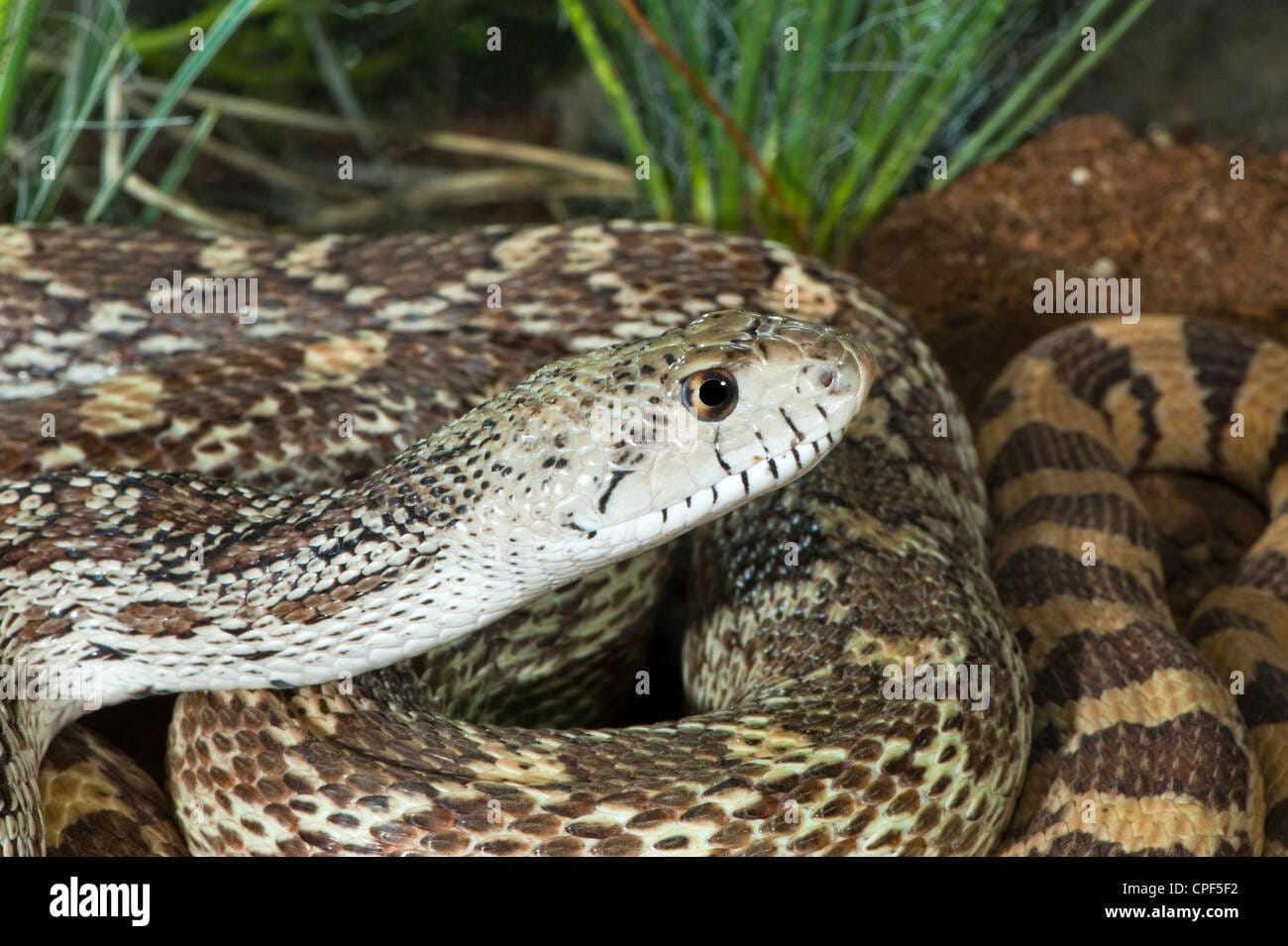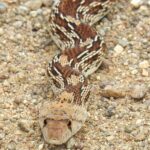Unsure of the Arizona Gopher Snake? This article will reveal the inside scoop on this reptilian mystery. Are Arizona gopher snakes poisonous? Do they have a nasty bite? Find the answers to these burning questions and more as we delve into their habits, appearance, and conservation. It’s time to get cozy and discover the fascinating world of the Arizona Gopher Snake.
Arizona Gopher Snakes: Unveiling the Harmless Reptile
The Arizona gopher snake, scientifically known as Pituophis catenifer affinis, is a frequent sight in the Grand Canyon State. These non-venomous constrictors, rather than injecting venom, overpower their prey by squeezing. Often mistaken for rattlesnakes, gopher snakes are actually beneficial neighbors, keeping rodent populations in check. Let’s explore the intriguing world of these misunderstood reptiles.
Identifying an Arizona Gopher Snake
True to their name, these snakes have a penchant for gophers. Their diet, however, extends to other rodents like mice, rats, and squirrels, and occasionally even birds or their eggs.
Here’s how to recognize an Arizona gopher snake:
Size: Typically around 4 feet long, some individuals can reach a remarkable 9 feet, surpassing the height of a standard doorway!
Color: Their base color ranges from tan and cream to yellow and orange-brown, adorned with brown, red, black, or olive blotches.
Behavior: When threatened, they may mimic a rattlesnake by coiling up, flattening their heads, hissing, and vibrating their tails – a clever bluff to ward off danger.
Habitat and Range
Arizona gopher snakes showcase remarkable adaptability, thriving in various habitats throughout the state:
- Deserts
- Prairies
- Woodlands
- Brushlands
- Coniferous forests
- Cultivated lands
- Sandy dunes
- Mountainous areas up to 8,000 feet
Unveiling the Truth: Gopher Snakes vs. Rattlesnakes
Mistaking an Arizona gopher snake for a rattlesnake, especially during their convincing rattlesnake impression, is a common occurrence. However, it’s crucial to remember that gopher snakes pose no threat to humans. Raising awareness about their gentle nature not only mitigates fear but also helps to protect these beneficial creatures.
Having gopher snakes around your home or garden is a stroke of luck. They provide a natural, free pest control service, effectively managing rodent populations.
Citizen Science: Contributing to Conservation
Although categorized as a species of Least Concern by the International Union for Conservation of Nature (IUCN), Arizona gopher snakes face threats, primarily habitat loss due to human encroachment. Sadly, they are also often killed out of fear due to misidentification.
We can all play a role in their conservation. By reporting sightings of Arizona gopher snakes to citizen science programs, we contribute valuable data that aids researchers in monitoring populations and making informed conservation decisions.
A Visual Guide: Gopher Snake vs. Rattlesnake
This table highlights the key differences between an Arizona gopher snake and a rattlesnake:
| Feature | Arizona Gopher Snake | Rattlesnake |
|---|---|---|
| Head Shape | Narrow, oval-shaped head | Triangular-shaped head with a wider base than the neck |
| Eyes | Round pupils | Vertical, elliptical pupils |
| Heat Sensing Pits | Absent | Present between the eyes and nostrils |
| Tail | Tapers gradually, no rattles | Distinct rattles at the tip of the tail |
| Defensive Behavior | Might mimic a rattlesnake by hissing, coiling, and vibrating its tail | Typically rattles its tail as a warning |
By understanding the Arizona gopher snake’s characteristics, behavior, and the challenges they face, we can ensure these remarkable creatures flourish in Arizona for future generations.
Are Arizona Gopher Snakes Venomous?
The question on everyone’s mind: are Arizona gopher snakes venomous? The answer is a resounding no. These fascinating creatures are constrictors, subduing their prey through constriction rather than venom.
While a gopher snake bite, though unlikely, might sting due to their strong jaws and sharp teeth, it’s not a medical emergency.
Their resemblance to rattlesnakes, coupled with their impressive mimicry of rattlesnake behavior, often leads to fear and misidentification. However, it’s crucial to remember those tactics are all for show.
In reality, we should appreciate gopher snakes for their natural pest control service, effectively keeping rodent populations in check.
When encountering a snake in Arizona, observe it from a safe distance and familiarize yourself with the differences between gopher snakes and their venomous counterparts. This knowledge mitigates fear and promotes the safety of these valuable reptiles.
Do Gopher Snakes Bite?
While not venomous, gopher snakes, like all snakes, possess teeth. When feeling threatened or cornered, they may bite. It’s best to respect their boundaries and observe them from a safe distance.
Mistaking them for rattlesnakes is common, but gopher snakes lack rattles and have a blunt tail, while rattlesnakes have a distinct rattle at the tip of their tails.
The best approach when encountering a gopher snake is to leave it be. They are more interested in their rodent prey than interacting with humans. If handling is absolutely necessary, wear gloves and move slowly and calmly to avoid startling them.
What is the rarest snake in Arizona?
Determining the absolute rarest snake in Arizona is a complex task. Rarity can be attributed to factors like a limited geographical range, a small population size, or simply a lack of data due to the snake’s secretive nature.
Some contenders for the title of rarest snake in Arizona include:
Sonoran Mountain Kingsnake: Found only in a small region of southern Arizona, this snake is often misidentified as a coral snake, making it difficult to accurately assess its population.
Glossy Snake: This secretive snake primarily inhabits southeastern Arizona, preferring secluded locations, making them a rare sight.
Night Snake: Their nocturnal habits make them challenging to study and track, resulting in limited data on their population size.
The elusive nature of snakes and the constant fluctuations in their populations make it challenging to definitively identify the rarest species. However, this mystery adds to the allure of these fascinating creatures.
internal links:
A type of funnel-weaver spider, the barn funnel weaver spider can be found in barns and other structures, and they are known for their large size and distinctive web. In contrast, the broad faced sac spider is a type of sac spider that is typically found in leaf litter and other natural habitats, and they are known for their broad, flat face.
- Mastering Leader in Spanish: The Complete Guide - April 19, 2025
- Uncovering Surprising Parallels: England Size Compared to US States - April 19, 2025
- Old Mexico Map: Border Shifts 1821-1857 - April 19, 2025
















